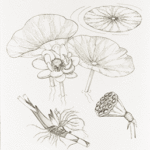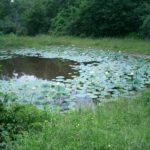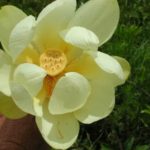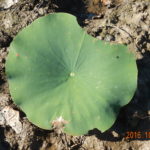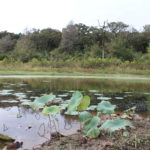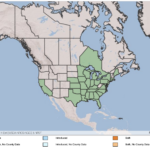Nelumbo lutea
USDA, NRCS. 2018. The PLANTS Database (http://plants.usda.gov, 28 March 2018). National Plant Data Team, Greensboro, NC 27401-4901 USA.
Illustration courtesy of University of Florida/IFAS Center for Aquatic and Invasive Plants. Used with permission.
What is American Lotus?
Other common spellings and names include: yellow water lotus, yellow lotus.
Physical Characteristics
Leaves:
- Disk-shaped
- Centrally shield-shaped
- Floating
- Up to 2.75 feet in diameter
- Center cupped
- Peduncles thick
Flowers:
- One flower
- Pale-yellow in color
- Up to 10 inches wide
- 20+ sepals and petals
- Open each morning and close by late afternoon
- Bloom Jun-Sep
Fruit:
- Nut-like
- Does not split open to release seeds when ripe
- Each separately embedded in the receptacle
- About 0.4 inches in diameter
Stem:
- Slender horizontal stem
Roots:
- Large and rooted in the mud
Where Does it Grow?
American lotus can be found in the quiet water of ponds and sluggish streams.
Pros and Cons of American Lotus
The large acorn like seeds of American lotus are utilized by some ducks and other wildlife. Beavers and muskrats will consume the rhizomes. Submerged portions of all aquatic plants provide habitats for many micro and macro invertebrates. These invertebrates in turn are used as food by fish and other wildlife species (e.g. amphibians, reptiles, ducks, etc.). After aquatic plants die, their decomposition by bacteria and fungi provides food (called “detritus”) for many aquatic invertebrates.
Throughout history, the roots, leaves, and seeds have been prepared various ways by humans.
